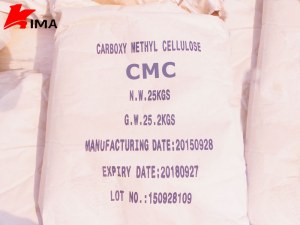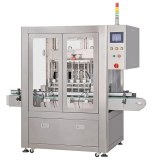Carboxymethyl Cellulose(CMC), known as Cellulose gum, is a high-polymer cellulose ether obtained by chemically modifying natural cellulose.CMC is a white to off-white, odorless, and tasteless powder that is used in a variety of industries for its ability to thicken, bind, and stabilize products.
Sodium CMC is produced by chemically modifying cellulose with chloroacetic acid, resulting in the addition of carboxymethyl groups (-CH2-COOH) to the cellulose backbone. This modification makes the resulting polymer more soluble in water, allowing it to form stable and viscous solutions.
Sodium Carboxymethyl Cellulose(CMC) has the functions of thickening, film formation, adhesion, water retention, colloid protection, emulsification and suspension.
Carboxymethyl cellulose cas number: 9004 32 4
How Do You Use Hydroxypropyl Methylcellulose?
The use of carboxymethyl cellulose (CMC) depends on the industry and the specific product it is being used in. However, some general guidelines for using CMC are as follows:
1. Determine the appropriate concentration of CMC:
The amount of CMC needed for a particular application will depend on the desired thickness, viscosity, and other properties of the product. Consult the product instructions or a professional to determine the appropriate concentration.
2. Dissolve the CMC in water:
CMC is water-soluble, and it should be added to water slowly while stirring to ensure that it dissolves completely. The amount of water used will depend on the desired concentration and the application.
3. Mix CMC solution with other ingredients:
Once the CMC is fully dissolved in water, it can be mixed with other ingredients, such as emulsifiers, thickeners, or stabilizers, depending on the desired properties of the product.
4. Adjust the pH and temperature:
CMC is stable over a wide pH range and at different temperatures, but the pH and temperature may need to be adjusted to achieve the desired properties. Consult the product instructions or a professional for guidance.
5. Mix thoroughly:
Once the CMC has been added to the product, it should be mixed thoroughly to ensure that the CMC is evenly distributed and that the desired properties are achieved.
What Are Carboxymethyl Cellulose Uses?
Food Industry
CMC is widely used as a food additive and is approved by the FDA as a safe ingredient. CMC in food industry is used as a thickener, stabilizer, emulsifier, and texturizer in a variety of foods such as dairy products, baked goods, sauces, and beverages.
Pharmaceutical Industry
CMC is used as a binder, disintegrant, and emulsifier in the production of tablets, capsules, and other pharmaceutical products.
Personal Care Industry
CMC for detergent is used in a variety of personal care and cosmetic products such as toothpaste, shampoo, and lotions as a thickener, emulsifier, and stabilizer.
Textile Industry
CMC textile is used as a sizing agent to improve the strength and flexibility of fabrics.
Paper Industry
CMC paper is used as a wet-end additive in paper manufacturing to improve the strength and water retention of the paper.
Oil and Gas Industry
CMC for oil drilling is used as fluid additive to improve the viscosity and fluid loss of the drilling fluid.
Paint and Coatings Industry
CMC for paint is used as a thickener, suspending agent, and stabilizer in the production of paint and coatings.
If you are looking for a reliable cmc chemical company, don't hesitate to contact us!
There are many hydroxypropyl cellulose suppliers, but we are one of the best choices for you.
Location : HUAGUANG RD 188,ZHANGDIAN,ZIBO, 255000 SHANDONG,
Contact : CELL KIMA , 86 533 6281218







